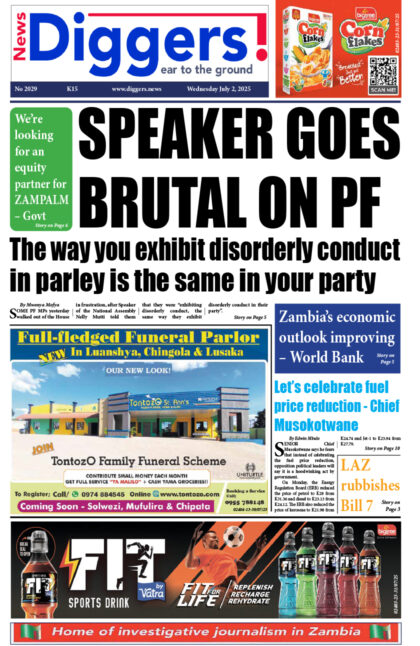THE total number of active mobile network subscriptions in Zambia has increased to 17.9 million as at June 30, 2020, an all-time high, exceeding the country’s population, according to ZICTA.
And ZICTA says the value of electronic money transactions skyrocketed to hit K43 billion by the half-year period, up from K18.9 billion during the same corresponding period last year, indicating a 126 percentage spike.
Meanwhile, the ICT regulator has issued a call for applications for a network license in the international market segment and a service licence in the national market segment following the cancellation of UZI Zambia’s licence.
Announcing the ICT sector 2020 mid-year market performance, ZICTA stated that the total number of active mobile network subscriptions in the country increased to 17.9 million by the half-year period.
“The total number of active mobile network subscriptions increased from 16.3 million subscriptions at the end of June, 2019 to 17.9 million subscriptions at the end of June, 2020 reflecting an improvement of 10.0 per cent. The growth in mobile network subscriptions represents an improvement in the mobile penetration rate, defined as the ratio of the total number of active subscriptions to the total population, from 93.8 per cent recorded at the end of June, 2019 to 100.2 percent recorded at the end of June, 2020. This means that there are as many active sim cards in the country as the size of the population,” read a statement availed by ZICTA corporate communications manager Ngabo Nankonde.
Revenues from the mobile network subsector equally jumped by nearly 13 per cent, driven by airtime and data sales.
“The mobile telephone subsector reported a 12.8 per cent increase in revenue performance in the first half of 2020 compared to the same period in 2019. Revenue increased from ZMW2.1 billion in the first half of 2019 to ZMW2.4 billion during the first half of 2020 on a year-to-date basis. Airtime sales and data sales continued to account for the largest proportion of revenue for the mobile telephone sector,” Nankonde stated.
“The total number of active Internet subscriptions in the country increased from 9.1 million subscriptions recorded in the first half of 2019 to 9.5 million subscriptions reported at the end of June, 2020 reflecting an improvement of 3.6 per cent. Consequently, the Internet penetration rate increased from 52.6 per cent to 52.9 per cent between June, 2019 and June, 2020.”
And the value of electronic money transactions leaped to hit K43 billion by the half-year period ending June 30, up from K18.9 billion during the same corresponding period last year, indicating a 126 percentage spike.
“The value of electronic money transactions increased from ZMW18.99 billion recorded in the first half of 2019 to ZMW43 billion recorded in the first half of 2020, reflecting an increase of 126 per cent. Similarly, the volume of electronic money transactions increased from 224 million transactions recorded in the first half of 2019 to 424 million transactions recorded in the first half of 2020, reflecting an increase of 89 per cent. MTN Zambia in January 2020 was among the first providers of mobile broadband services to launch a new range of non-expiry mobile data bundle,” she stated.
Meanwhile, ZICTA has issued a call for applications for a network license in the international market segment and a service licence in the national market segment following the cancellation of UZI Zambia’s licence.
The ICT regulator cancelled UZI Zambia’s two licences during the first half this year.
ZICTA forecasts that the mobile subscriber base will close the year at over 18.2 million subscriptions.
Investments into infrastructure, especially 4G/LTE sites among the mobile network operators, is likely to drive increased adoption of broadband services.
However, despite the exponential growth in the ICT sector, there are downside risks in the macroeconomic environment that could dampen the growth prospects in the sector, such as the sustained kwacha depreciation, which has potential to spur inflationary pressure that would adversely affect the cost inputs for operators.
The downward revision of the economic growth prospects to -4.2 per cent this year is also likely to stifle market expectations regarding uptake and usage and could extend to investment decisions, according to ZICTA.



















